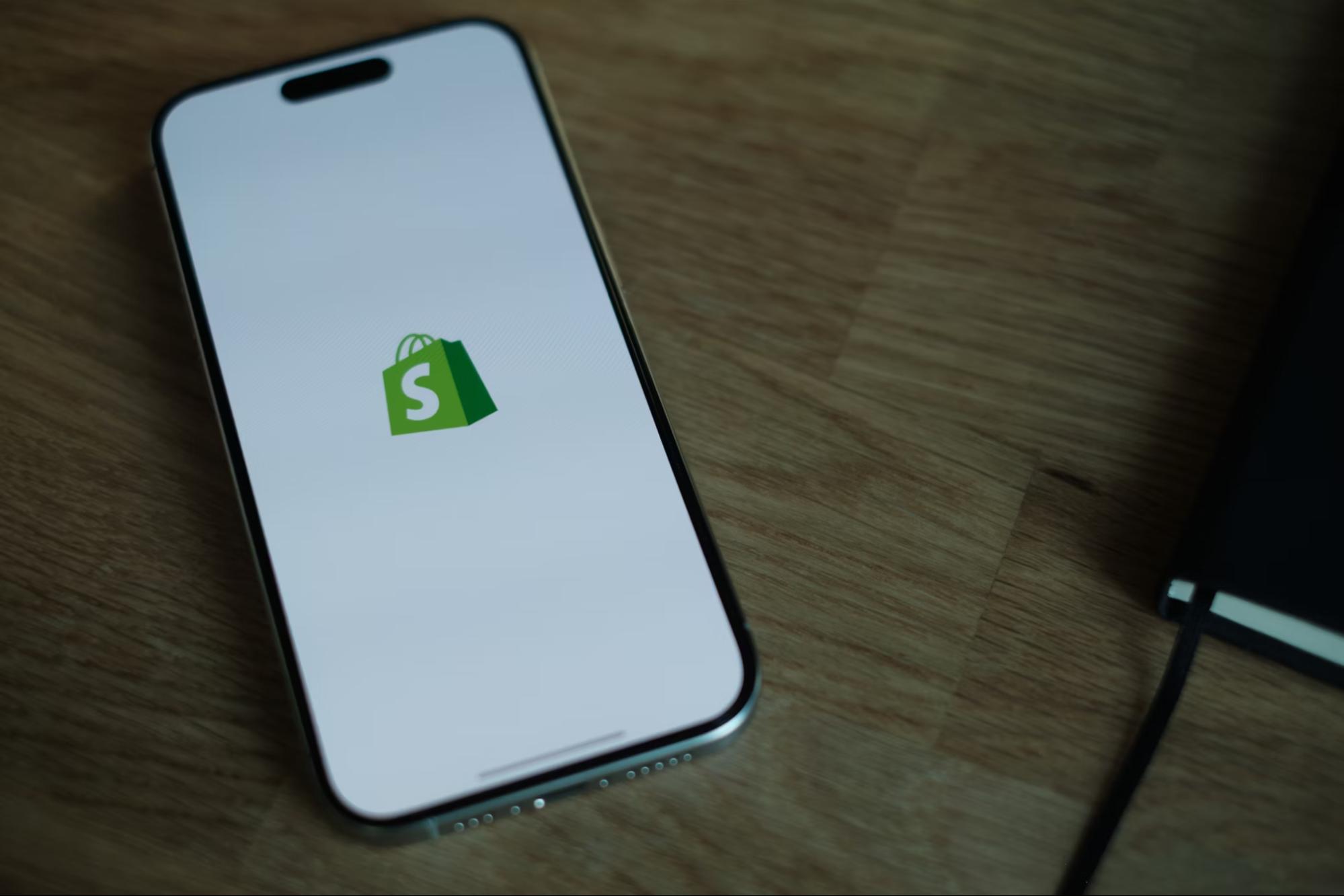ChatGPT Shopify Integration: Everything You Should Know

What is ChatGPT Shopify Integration?
The ChatGPT Shopify integration is a feature that allows ChatGPT to function as an in-chat shopping platform by integrating directly with Shopify’s checkout and product listings. OpenAI has added a native purchase flow to the chat assistant, including product displays and call-to-actions like “buy now”, helping users buy ChatGPT-suggested products without leaving the chat.
ChatGPT now supports a new in-chat shopping feature called Instant Checkout, which lets users buy certain products directly inside the chat, with no redirect needed. Currently, it works for U.S. Etsy merchants (free, Plus, and Pro users) via Stripe, and Shopify merchant support is coming soon.
When a user asks for product suggestions, ChatGPT shows relevant items (unsponsored). For products enabled for Instant Checkout, a “Buy” (or “Buy Now”) button appears. The user confirms shipping and payment details in chat, and the order is passed to the merchant, who handles fulfillment. At launch, only single-item purchases are supported. Multi-item carts, additional merchants, and global expansion are expected next.
How Does the ChatGPT Instant Checkout Work?
ChatGPT returns product options across the web when you ask for product recommendations. Until now, users clicked out to merchant sites to purchase. With Instant Checkout, the process becomes seamless for supported products. Here’s how:
- Results: ChatGPT displays unsponsored product picks (ranked by relevance, not payment) in response to shopping prompts.
- Buy-in-chat: For eligible users and products (currently U.S. users buying from U.S. Etsy sellers), a “Buy” or “Buy Now” button appears. Users confirm shipping, payment, and order details directly in chat.
- Order Handoff: Once confirmed, ChatGPT passes the order details, such as, product choice, shipping, payment token, to the merchant via the Agentic Commerce Protocol (ACP). The merchant then accepts or declines the order, processes payment, and handles fulfillment using their existing systems.
- Payment & Fees: Payment is typically handled via Stripe, using a shared payment token system. Merchants pay a commission fee per completed purchase and the users pay only product cost.
- Constraints: Only single-item purchases are supported now. Multi-item carts and Shopify support are planned for future rollout.
Release Timelines and Availability
On April 28, OpenAI announced that ChatGPT will launch a shopping feature that will enable users to discover product picks with buy buttons, allowing purchases directly in ChatGPT. At first, the shopping buttons appeared for all users, signed in or not, but purchases weren’t processed in ChatGPT. Clicking through sent shoppers to the merchant’s site to complete the checkout.
Now, Shopify merchant sign-ups are open, and Instant Checkout is being rolled out. You can confirm eligibility in Shopify’s portal. Currently, the option is available to all U.S ChatGPT users (free, Plus, or Pro) interested in buying from Etsy. Shopify shopping capabilities are expected to roll out to U.S. buyers shortly, pending final readiness. Future updates include expanding to a global audience, multi-item carts, and more merchant integrations.
How to Prepare for the ChatGPT Shopify Integration?
Preparation is about being machine-readable and policy-clear. Focus on structured product data, consistent availability/pricing, and basic tracking so assistants can find, describe, and route buyers reliably.
1. Ensure Product Data is AI-Ready
Your products must be discoverable by ChatGPT, which depends on rich, well-structured product data.
- Add specific and clear titles
- Write descriptions in natural language
- Avoid keyword stuffing or jargon
- Mention key details like size, color, material, and ideal use cases
2. Train Product Content Around Buyer Intent
Since ChatGPT understands natural language, traditional keyword optimization doesn't make products discoverable to AI. Merchants need to optimize the store with content written in natural, conversational language. Here are some key points to consider:
- Put yourself in users' shoes and identify the questions they might ask ChatGPT about your products.
- Give relevant prompts to ChatGPT to analyze its responses to optimize your content.
- Optimizing content isn’t a one-time job, which is why you need to make regular updates and required adjustments to stay up to date.
3. Enable Customer Reviews
Product reviews, ratings, and user-generated content (UGC) might help products get recommended by ChatGPT. AI often considers products with positive reviews and ratings to be high-quality. Here is how to get started:
- Allows customers to leave reviews on your site
- Or use Shopify apps to surface third-party reviews
- Include a review schema to increase visibility
4. Keep Product Feeds and Pricing in Sync
Product listings should be optimized with prices and availability, and not be vague. If you use tools like Google Merchant Center, Klaviyo product feeds, or Shopify JSON endpoints, send clean, structured data to these feeds.
5. Enable Instant Checkout and Track ChatGPT Referral
To enable instant checkout, you can apply here: Instant Checkout for merchants in ChatGPT. OpenAI might introduce analytics dashboards or reporting features soon for tracking sales or interactions generated by ChatGPT. Make good use of these data/numbers to optimize your website content.
6. Evaluate Your Brand in ChatGPT Search
Audit how ChatGPT mentions or recommends your brand. You can manually enter prompts to see ChatGPT’s response or use tools like Semrush AI SEO Toolkit to see the brand mentions you get from AI. After analyzing such data, optimize your content and product feed to become more AI-ready.
7. Adjust Marketing Strategies
To increase your sales and conversions, incorporate more sales channels and optimize them for conversions. Alongside AI-readiness, optimize your e-commerce website for SEO and user-friendliness, create more blog posts, increase social engagement, and create user-generated content. Update and adjust your marketing strategy to stay on trend and become a first mover.
Key Benefits of ChatGPT Shopify Integration for Store Owners
This integration compresses discovery, evaluation, and checkout into a single conversation, reducing handoffs that cause drop-off. The points below outline where merchants typically see meaningful lift:
Challenges and Limitations of ChatGPT Shopify Integration
Control and measurement are limited at launch, and AI phrasing won’t always match brand voice. The points below highlight the main constraints:
- Limited Control Over AI-Generated Responses: ChatGPT responds to queries based on its pre-trained models and external data sources, leaving merchants with little to no control over how responses are delivered. ChatGPT might fail to present or describe a product properly in line with a brand’s voice.
- Attribution Gaps in Conversational Conversions: Assessing the AI-driven performance and conversions is nearly impossible without proper tools or reporting features from ChatGPT. The AI can send traffic or help with in-chat sales. However, difficulty in analyzing responses or understanding how it works may lead to gaps in performance measurement.
- Data Privacy and Security Compliance: Integrating Shopify with ChatGPT could expose sensitive customer data if merchants do not handle it securely. Loss of customer trust, data breaches, and legal claims – these are just some of the issues that could arise if the system fails to secure customer privacy.
The Future of E-Commerce in the AI Era
Buying is shifting from keyword search to intent-led assistance. Forbes predicts that ChatGPT shopping will explode in the future, driven by the skyrocketing growth of ChatGPT and internet shopping. Brands that pair assistant-ready catalogs with strong trust signals on-site will convert that intent more consistently. Here’s what the future of e-commerce would possibly look like in the AI era:
- AI as a Sales Channel: AI-powered chatbots like ChatGPT might become a popular sales channel like Google SEO in the future. We might see more AI shopping with advanced features.
- AI-Powered Personalization at Scale: AI-powered personalization is already making shopping online more interactive and effortless. Use of such technology might soon explode and become mainstream.
- Balancing Automation and Human Touch: Content creators and brands could rely more on AI to automate tasks such as recommendations, customer support, and order management, while still adding a human touch for personalization.
How to Boost Shopify Engagement and Sales with Tolstoy Beyond ChatGPT
Tolstoy turns assistant-driven interest into on-site conviction. The capabilities below help shoppers see, compare, and buy faster, without adding friction to your storefront:
- AI Studio - High-Performing Content Creation: Tolstoy’s AI Studio helps store owners generate studio-like images and videos at scale using simple prompts. Brands can use the content for online stores, ads, and social media, eliminating the need for expensive photo shoots or multiple AI tools. Since ChatGPT prioritizes fresh content and webpages that were recently updated, leveraging Tolstoy AI Studio to automatically generate new images for product pages can result in higher visibility for your products.
- AI Player - Shoppable Videos: The AI Player allows brands to collect videos from social media and other sources and integrate them on the website. The Tolstoy player is optimized for LLM visibility, where each video gets its own JSON-LD schema with key details like title, thumbnail, duration, and upload date. The videos that appear on the page and feature products pass that context directly to search engines, and any video carousel or feed is marked up as organized lists, improving how they are seen by AI models.
- AI Shopper - Personalized Shopping Assistance: Tolstoy’s AI Shopper is a brand-aware AI sales chat agent that guides customers intuitively to a purchase. It converses with customers, recommends products, and offers virtual try-on experiences. The AI Shopper automatically identifies knowledge gaps based on customers' questions and helps the brands improve their product pages for greater AI visibility.
Conclusion
Chat-led shopping is moving discovery and checkout into a single conversation, and Shopify brands should plan for it now. The upside goes to stores with AI-ready catalogs, and on-site experiences that quickly confirm a buyer’s choice. It is important to treat this as a program: track assistant-referred sessions, test content that mirrors natural queries, and expect attribution and policies to evolve. Tolstoy helps close the last mile by turning intent into confident decisions with its AI tools.
FAQs
Shopify brand owners should take the following steps:
- Use clear, descriptive titles and natural language for product details.
- Optimize content for natural, conversational language that aligns with buyer intent.
- Show reviews on your site for better AI visibility.
- Maintain accurate, structured product listings with up-to-date pricing and availability.
- Keep the content on product pages fresh and updated, and enrich it with UGC and videos.
- Analyze how ChatGPT mentions your brand and optimize your content accordingly.
You can track conversions from ChatGPT using OpenAI’s analytics dashboards for sales and interactions when they introduce them in the future. Since the integration is a new feature, there are no proper tracking options or tools available at the moment.
Tolstoy enhances your brand visibility for ChatGPT by:
- Make the videos on your site visible to ChatGPT, enriching your PDPs with constantly fresh and readable content.
- Generate variations of product images for PDPs, ensuring your pages are regularly updated to improve ranking.
- Produce clear captions and transcripts that help both shoppers and AI quickly understand product benefits.
- Identify knowledge gaps based on real customer questions to continuously improve PDP content.
The AI commerce era is here!
Ready to accelerate
your brand?
Table of contents
More stories

3 Best Shopify Themes With Video Headers
Video headers are a great way to capture the attention of potential customers. Check out three Shopify themes with video headers to choose from for your store.



